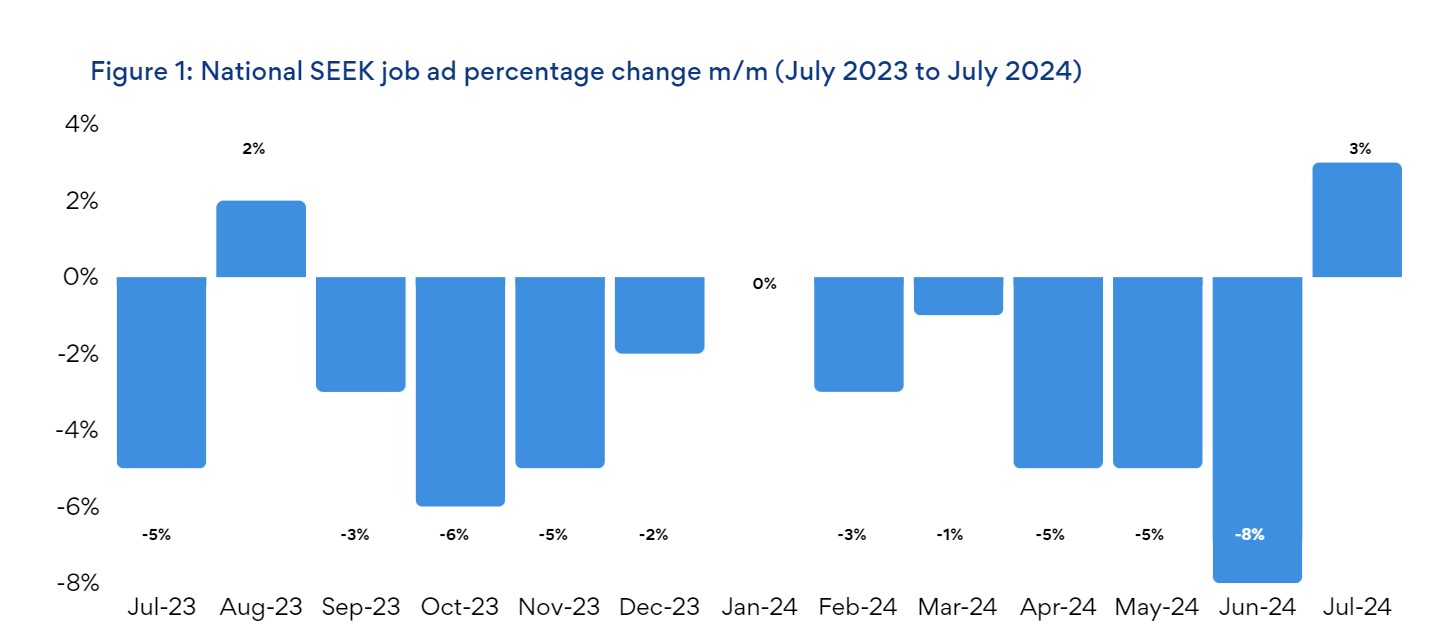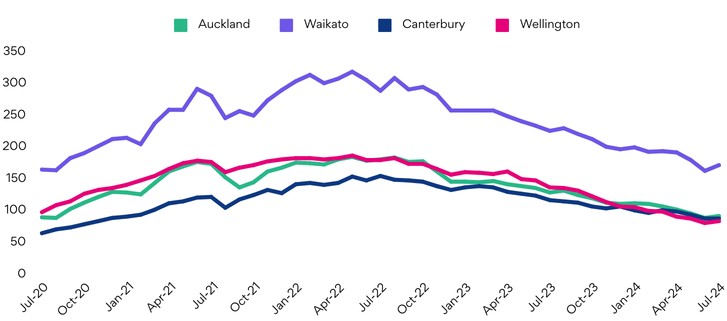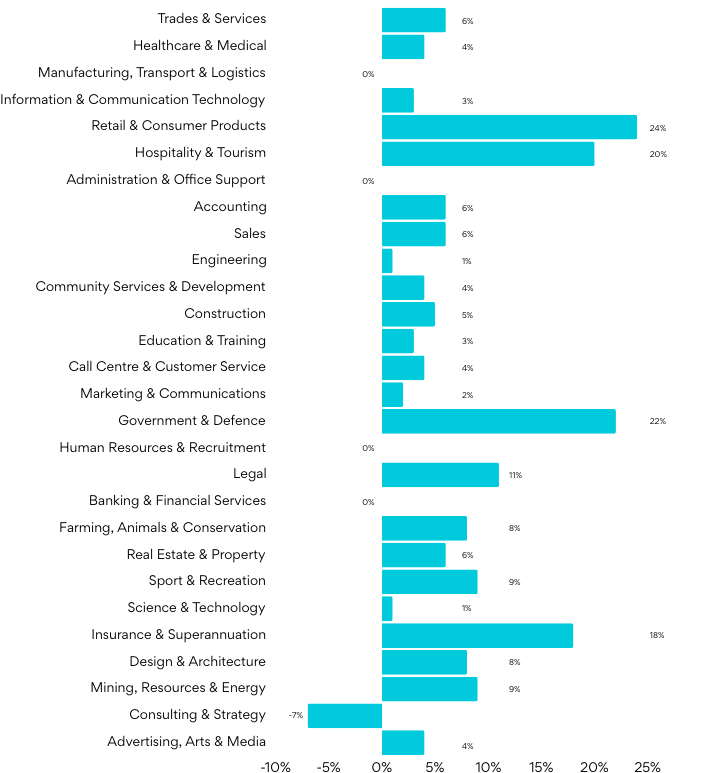SEEK NZ Employment Report - July

NATIONAL INSIGHTS
- For the first time since January, job ads rose, increasing 3% m/m.
- Applications per job ad were up 7% m/m*.
REGION INSIGHTS
- Bay of Plenty recorded the largest increase in job ads in July, up 16%.
- Tasman, Southland and Gisborne were the only regions where jobs ads declined m/m.
- Applications per job ad rose by 15% in Hawkes Bay, 10% in Canterbury and 7% in Auckland.
INDUSTRY INSIGHTS
- Ad volumes in Retail & Consumer Products rose 24% and in Hospitality & Tourism 20%.
- Consulting & Strategy was the only industry where job ads declined in July.
*Applications per job ad are recorded with a one-month lag and data shown in this report refers to June data.
NATIONAL TRENDS
There was an increase in ad volumes for the first time since January, up 3% from June, after an 8% fall the month prior. July’s rise was driven by increased demand in most regions, and in all but one industry (Consulting & Strategy, -7%).
Applications per job ad increased another 7% in June, the greatest rise since January, demonstrating greater competition within the already candidate-heavy employers’ market.


REGION TRENDS
All but three regions recorded an increase in job ad volumes in July: Southland (-12%), Tasman (-4%), and Gisborne (-1%).
Bay of Plenty recorded the largest monthly rise, with job ads up 16% from June, the largest monthly growth the region has recorded in over three years. The second largest rise was recorded in Manawatu (10%).
Wellington’s 4% rise and Auckland’s 3%, though more subdued, were also the largest monthly jumps these regions had recorded in over two years.
Demand among candidates was spread across most regions, with a 15% increase in applications per job ad in Hawkes Bay, 10% in Canterbury and 7% in Auckland.



.png)
INDUSTRY INSIGHTS
Most industries recorded an increase in July, some to a significant degree. The customer-facing industries saw notable growth, with Retail & Consumer Products rising 24% in a month and Hospitality & Tourism up by 20%. Government & Defence jobs also rose 22%.
Consulting & Strategy was the only industry where job ads declined in July, down 7%. Some industries, such as Manufacturing, Transport & Logistics and Administration & Office Support recorded no change m/m.
While white collar and service industry roles drove the increase in job ads in the major cities, outside of the urban centres, the Construction sector recorded a 14% increase in job ads, driven by rises in Design & Architecture and Trades & Services.



ABOUT THE SEEK NZ EMPLOYMENT REPORT
The SEEK Employment Report provides a comprehensive overview of the New Zealand employment marketplace. The report includes the SEEK New Job Ad Index, which measures only new job ads posted within the reported month to provide a clean measure of demand for labour across all classifications. SEEK’s total job ad volume (not disclosed in this report) includes duplicated job advertisements and refreshed job ads. As a result, the SEEK New Job Ad Index does not always match the movement in SEEK’s total job ad volume.
NOTES
(1) The SEI may differ to the job ad count on SEEK’s website due to a number of factors including: a) seasonal adjustments applied to the SEI; b) the exclusion of duplicated job ads from the SEI; and c) the exclusion of Company Listings (included under Company Profiles) from the SEI
(2) The Covid-19 pandemic led to a high level of volatility in labour market data between April 2020 and March 2022. As a result, caution is recommended when interpreting trend estimates during this period as large month-to-month changes in variables generated multiple trend breaks
(3) The applications per ad index contains a series break at Jan 2016 when the calculation of this series changed from using gross variables (inclusive of all SEEK job listings) to net variables (removing duplicate job listings). This change has a negligible impact on recent data points, but caution is recommended when interpreting data immediately following the series break, and particularly in 2016 where growth rates have not been adjusted for the series break.
DISCLAIMER
The Data should be viewed and regarded as standalone information and should not be aggregated with any other information whether such information has been previously provided by SEEK Limited, ("SEEK"). The Data is given in summary form and whilst care has been taken in its preparation, SEEK makes no representations whatsoever about its completeness or accuracy. SEEK expressly bears no responsibility or liability for any reliance placed by you on the Data, or from the use of the Data by you.